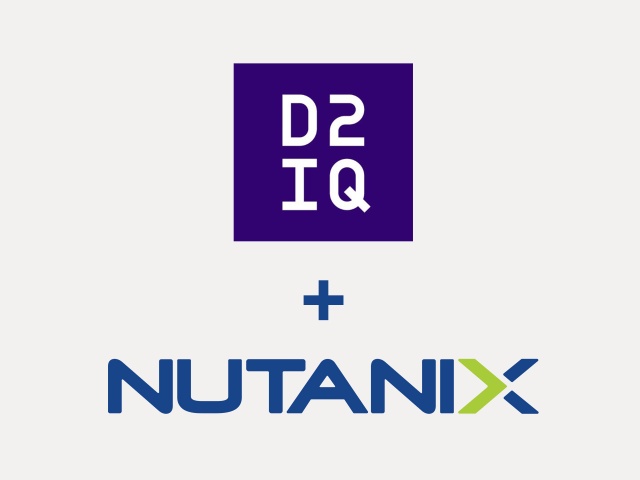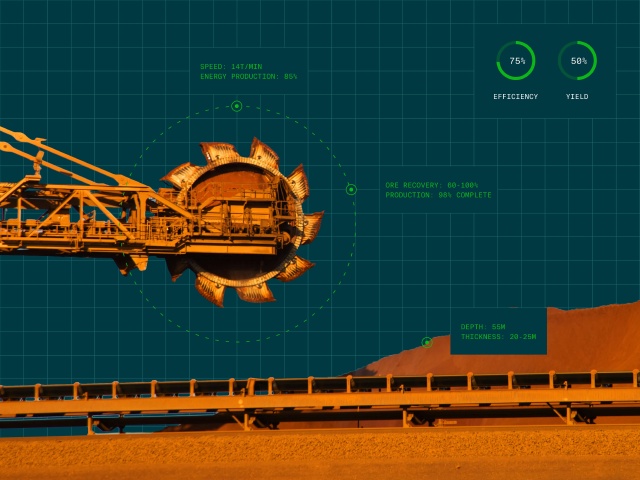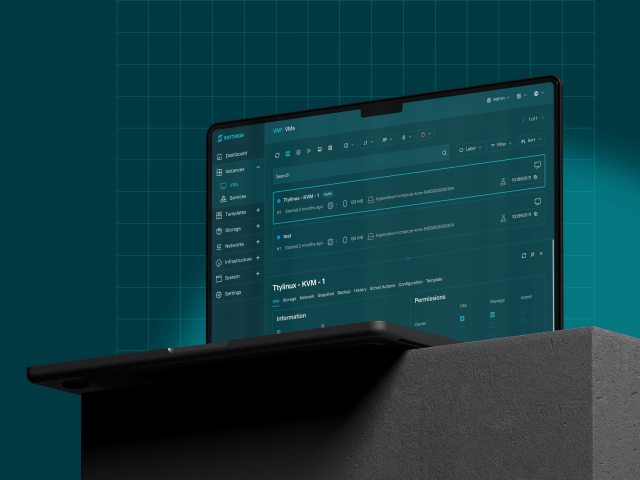Is the distressed asset purchase of D2iQ an admission of cloud-native failure?
Some 19 months after D2iQ joined the Nutanix Ready Partner Program, Axios has reported that Nutanix acquired the assets of the much-hyped company. Founded as Mesosphere, the business at its peak raised more than $250 million from investors like Khosla Ventures, Andreessen Horowitz, Koch Disruptive Technologies, and T. Rowe Price. A sad end to the company founded by the co-creators of Apache Mesos and early infrastructure teams behind behemoths such as Airbnb and Twitter.
Deja-vu
This feels like 2019 all over again when VMware purchased Pivotal Software, Pat Gelsinger VMware’s CEO at the time claimed as a result of the acquisition VMware “was poised to be the leading enabler of Kubernetes with a deep understanding of both operators and developers.” The acquisition closed about 60 days after Mesosphere renamed itself D2iQ to reflect its shift in strategy from Mesos to incorporate Kubernetes. To understand where this change came from, we must take a quick look back at the origins of D2iQ.
D2iQ
D2iQ (pronounced by those in the know as “Day 2-IQ”), started its life out as Mesosphere in what seemingly looked like a Silicon Valley Cinderella story. Based on the open source Apache Mesos project, and taking seed funding of $2.25M from Andreessen Horowitz, Kleiner Perkins, Foundation Capital, and SV Angel in 2013. Mesosphere set out to change how companies manage resources on servers inside the data center. Growing rapidly under the stewardship of CEO Florian Liebert, and CTO Tobi Knaupp, Mesosphere brought in a further $73.5M (including from Microsoft and HPE) in 2016 and then a further $125M in 2018 as the company swelled to 300 employees, and 125 customers and a $50 million revenue run rate. It seemed they could do no wrong.
Somewhere between the two monster funding rounds, Microsoft tried to buy Mesosphere for $150 million, only to get shut down. Then it was Google’s turn.
As reported by Axios in April 2020, Google was entertaining an acquisition in hopes the integrated Kubernetes distribution would help them better compete with Amazon and Microsoft when marketing cloud offerings to developers. The alleged acquisition was valued north of the $250 million that D2iQ has raised from venture capitalists, but less than the $775 million valuation it received via its Series D nearly two years earlier.
It’s not clear what killed the deal, other than at least one D2iQ executive is said to have opposed the transaction.
Container Wars
It’s important to note that perhaps unbeknownst to most, there was a backdrop of one of the shortest technology battles in computing history also taking place. We saw the rise of Docker before the ultimate sale of the core product of its business, Docker Enterprise, to OpenStack and Kubernetes support firm Mirantis. Kubernetes reigned supreme with Google ultimately ceding stewardship to the the Cloud Native Computing Foundation (CNCF) as it grew to become the defacto. Microsoft went all-in on Kubernetes, and Red Hat built OpenShift into a complete, commercial Kubernetes platform. Rather than try to replicate it, IBM bought Red Hat outright in a deal valued at $34 billion.
Failed M&A
As D2iQ was ramping up its capital, Nutanix was continuing its growth with the acquisition of first PernixData and Calm.io in 2016, and then Netsil, followed by Minjar in 2018. These acquisitions have arguably resulted in little more than shelf-ware and might be viewed more as “acqui-hires” over true transformational technology-based acquisitions.
PernixData offered software for virtualizing server-side flash memory and random-access memory, while Calm.io provided Nutanix with a DevOps automation platform. Netsil provided a cloud application monitoring solution, while Minjar’s Botmetric provided cost control and visibility of workloads running in public clouds.
Nutanix would also acquire Frame (Mainframe2, Inc), to deliver desktops-as-a-service (DaaS) later in 2018, only to go on and resell it in mid-2023 to Dizzion, a small glint of success in an otherwise littered collection of failed acquisitions.
Project Beacon
At Nutanix’s annual conference .NEXT, this year hosted in Chicago, Nutanix presented “Project Beacon” which CEO Rajiv Ramaswami described as a “vision for enabling developers to write applications once and run them anywhere by delivering data-centric PaaS level services that are no longer tied to a single infrastructure provider. We hope to enable enterprises to fully embrace the benefits of hybrid multi-cloud, not only at the infrastructure layer but also at the application data layer.”
They pulled in endorsements from Red Hat’s chief, Matt Hicks, and IDC’s RVP for Infrastructure Systems, Platforms and Technologies, Dave Pearson. Nutanix even went so far as to create a beta signup landing area on their website.
Distributed Hybrid Infrastructure
Earlier this year, Gartner announced a new Magic Quadrant for Distributed Hybrid Infrastructure and at the same time brought an end to coverage of Hyperconverged Infrastructure. No doubt seeing the writing on the wall, or more likely a tip from a friendly analyst, Nutanix, which made its name with hyperconverged infrastructure that bundled compute and storage in single nodes, decided the time was right to offer dedicated storage and compute nodes. Nutanix (along with VMware) was a leader in Gartner’s Hyperconverged Infrastructure Magic Quadrant, last published in November 2021. It appeared as a Challenger in the Magic Quadrant for Distributed Hybrid Infrastructure where a hard requirement was the ability “to deploy the infrastructure in multiple locations that must include on-premises customer data center and a public cloud.”
To me, it looks like Nutanix is already positioning for the next iteration of the Magic Quadrant for Distributed Hybrid Infrastructure… perhaps one where customers don’t need to be running software both on and off premises.
A Magic Quadrant where it’s the workload that matters, not the stack.
Cloud washing
It feels like Nutanix is trying to take the easy route to dealing with the Kubernetes go-to-market problem, and, rather than actually solving it themselves, they’ve opted to acquire IP that failed to successfully go-to-market on its own. The issue here though, is just because you support containers, that doesn’t make you a cloud. Moreover, this isn’t even the first Kubernetes play by Nutanix. Diving into the Nutanix Cloud Native Open Source Documentation, they seem to have already spent a long time looking at OpenShift along with their own Cluster API Provider Nutanix Cloud Infrastructure (CAPX), and, Nutanix Cloud Controller Manager (CCM). Curiously, D2iQ’s Enterprise Kubernetes Platform (DKP) doesn’t even appear.
There’s a risk here (probably very likely) that Nutanix will try to take DKP and make it the only way to do Kubernetes going forward, and then charge an arm and a leg for it. Instead of solving problems at lower layers of the stack and adding value at higher layers of the stack, what they may end up doing is delegating responsibility to DKP where they could be solving these problems themselves at their API layer.
Really though, it doesn’t matter if you prefer Mesos over Kubernetes; D2iQ over Rancher over Tanzu. This is all just cloudwashing. They’re trying to deliver a ‘cloud-like’ experience, except there is a critical problem; you can’t build a cloud, be that private, public, or hybrid, with legacy infrastructure. Just ask the hyperscalers - they’ve been building custom servers for the last decade.
Nutanix has never been a cloud, it’s always been legacy three-tier on-premises infrastructure. Sometimes it was the best dressed at the ball, as it led the way with Hyperconverged Infrastructure, although, in 2023, they’ve admitted you might want to scale storage separately from compute. A seemingly huge 180 from the position they built their business on.
A likely sign that over at Nutanix, innovation is dead.






